Call Of Duty: Black Ops 7 Review — Campaign Analysis
Call of Duty: Black Ops 7 Review arrives at a moment when the series is still processing the aftershocks of last year’s well-received Black Ops 6. The new campaign follows it by only twelve months, a remarkably short turnaround for a numbered sequel. Yet the result is not a conservative extension of last year’s design. Instead, the teams at Raven and Treyarch have pushed the campaign into territory that resembles a co-op sandbox more than a traditional single-player narrative. The ambition is unmistakable, though the execution wavers between flashes of invention and long stretches of repetition, creating a campaign that never quite settles into a clear identity.
In assessing its strengths and weaknesses, this article draws directly on Simon Cardy’s review on IGN, which captures the scope of the campaign and the contradictions within it.
Black Ops 7 pivots around one defining decision: the entire campaign is built for four-player co-op. It is not an optional mode tacked onto the margins but the central scaffolding around which its missions are constructed. When played with a group, many encounters unfold with an easy rhythm—coordinating attacks on bosses with multiple weak points, dividing stealth routes, or moving through wide enemy zones with the kind of momentum the series rarely encourages. With three other players in tow, even its louder, more chaotic stretches feel choreographed.
Alone, the tone changes. The campaign never adjusts its structure to accommodate solitary play. It offers no AI partners, no revised pacing, and no reprieve from the repeated objectives designed to be shared among four people. Tasks such as placing explosives on a structure must be done by a single player four times in a row. You cannot pause the game. Inactivity can lead to automatic removal from the session. These decisions reinforce the sense that the solo experience is an afterthought, and that the campaign’s priorities lie entirely in its multiplayer framework.
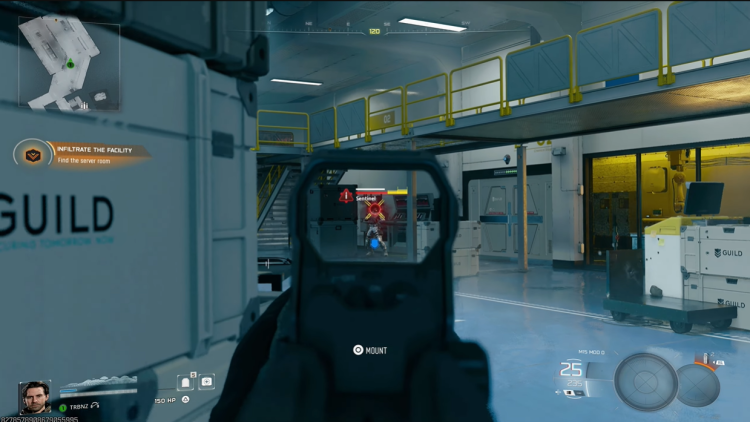
This framework presses against the story’s short, dense construction. Black Ops 7 moves briskly, reaching its endgame after roughly five hours. Within that span, the missions shift between disparate environments and realities, including near-future zones, surreal dream sequences, and nightmare-like visions produced by a weaponised fear toxin. The campaign trades espionage for spectacle, carrying players from corrupted memories to futuristic tech compounds without lingering on any single idea long enough for it to develop. It is not a story that invites contemplation. Instead, it relies on the sensory charge of its set pieces.
The threat at the centre of the plot is an alliance of old and new antagonists, including the return of Raul Menendez and the rise of The Guild, a malevolent tech faction led by Emma Kagan. Their experimentation with psychological warfare blurs the barrier between physical reality and hallucination. Visually, this provides some of the most striking moments in the campaign: shifting corridors, grotesque creatures, crumbling dream architecture, and altered timelines. These sequences lend the game a haunted quality, though the underlying mission design remains linear, with corridor firefights dominating most chapters.
Last year’s Black Ops 6 built its strongest levels around branching objectives and tightly structured espionage scenarios. Black Ops 7, in contrast, seems determined not to repeat that formula. It opts for larger, looser zones—especially in the fictional city-state of Avalon, which functions as both a narrative location and the stage for the campaign’s endgame mode. These more open areas promise freedom but often deliver repetition. Traversing wide rural portions of Avalon becomes a hunt for enemy clusters without much variation, and the missions that take place in these regions feel less concentrated and less authored than the more linear chapters.
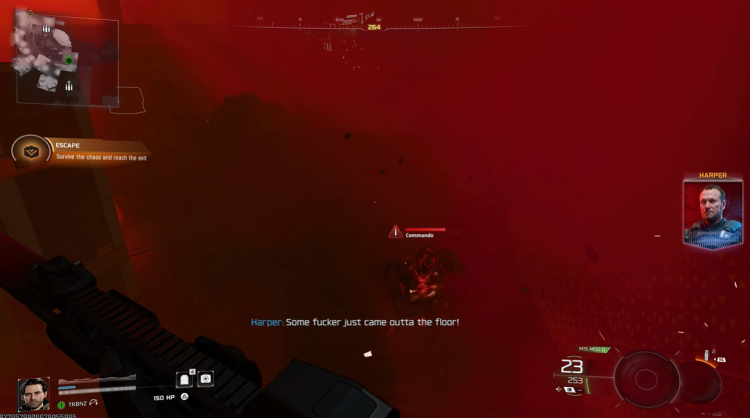
When the campaign leans back into carefully directed action, it finds more secure footing. A standout mission in Tokyo combines tight rooftop chases, subway combat, and explosive momentum. Moments like these recall the series’ earlier strengths: precision pacing, disruptive gimmicks, and a sense of deliberate escalation. They contrast sharply with the weaker chapters, where action devolves into loosely staged battles against inconsistent enemy populations—waves of combatants in some missions, sparse clusters in others, with no clear logic to their distribution.

The campaign’s gunplay remains the most consistently reliable element. Firearms carry weight and respond sharply, with assault rifles, SMGs, and sniper rifles each carving out their own presence in encounters. Armor layers elongate firefights but rarely to an excessive degree. The addition of near-future movement tools—grapple hooks, wingsuits, wall jumps, and kinetic boosts—opens the maps in ways that occasionally echo the kinetic fluidity of Titanfall 2. While that standard remains out of reach, the movement additions help differentiate the campaign’s rhythms from earlier entries.
Boss fights contribute another new layer. Rather than simple bullet sponges, these encounters use weak-point mechanics and movement patterns that encourage squad coordination. They do not fundamentally alter the genre’s expectations, but they add enough texture to break the monotony of corridor combat. A battle against a grotesque bio-mechanical plant rooted in a nightmare realm stands out specifically because it introduces new spatial challenges and makes co-op coordination feel essential rather than optional.
Enemy variety is broader this year, with human soldiers, mechanical units, and hallucinated threats sharing the screen. The mix of raiders, heavily armored titans, aggressive melee rushers, and robotic enemies forces shifts in pacing. A robotics lab mission illustrates this well by giving players a hacking tool that interrupts the flow of pure gunfire and turns the encounter into a puzzle of timing and cover management.
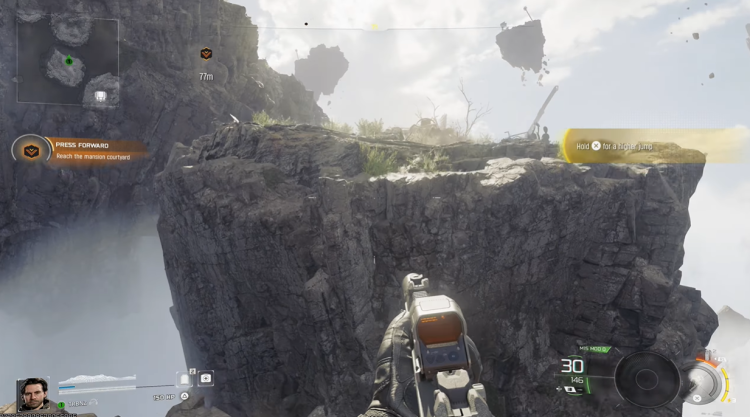
The campaign’s final act leads into an endgame mode set across the full expanse of Avalon. On paper, the mode’s structure resembles DMZ or an extraction shooter: players drop into a large region, complete missions, and attempt to extract with their progress intact. Failure wipes the run. Up to four players can team up, and the mode offers skill points tied to a combat rating that increases with successful engagements. Unlockable perks steadily enhance speed, durability, and firepower.
While the skeleton of the mode is promising, its activities lack variety. Most objectives involve clearing out zones packed with zombies or enemy militia, with little deviation beyond that loop. AI behaviour is rudimentary; enemies often wander out of cover or bunch together, making engagements predictable. The traversal tools soften some of this monotony, especially when chaining grapples and wingsuits across rooftops, but the repetition settles in quickly.

The endgame’s best qualities call back to the campaign’s better moments: coordinated assaults, sharp gunplay, and the occasional tactical shift. Its weaker qualities reflect the campaign’s structural contradictions. The mode’s ambition outpaces its depth, and the design relies too heavily on volume rather than variety. For some players, this may still function as a serviceable post-campaign activity. For others, it will feel like a prolonged epilogue without enough reward to justify its length.
The campaign’s narrative arc tries to bridge older Black Ops lore with the current storyline. David “Section” Mason returns as a central figure, voiced by Milo Ventimiglia. His conflict revolves around loss and legacy, with references to his father, Alex Mason, forming the emotional spine of the story. Long-time fans will recognize the callbacks, though newcomers may find the exposition dense. The script assumes a degree of familiarity with earlier games, especially Black Ops 2 and last year’s Black Ops 6. As a result, players who lack this background may feel unmoored during the campaign’s opening hours.

Supporting characters receive limited development. Spectre One’s squadmates echo traumas from their past but rarely move beyond brief flashes of introspection. Harper, performed by Michael Rooker, occupies a loud, erratic presence, sometimes pulling focus without contributing meaningfully to the story’s progression. The narrative leans heavily on its mainline characters and its ties to earlier entries, creating a structure that rewards long-term followers but leaves the broader ensemble underutilized.
Despite its unevenness, the campaign demonstrates the series’ willingness to evolve. Its movement systems, experimentations with cooperative layouts, boss encounters, and cross-mode ideas suggest a design team interested in reshaping what a Call of Duty campaign can be. Yet the inconsistency of its mission variety and the repetitive nature of its endgame temper that ambition. Certain chapters shine with clarity and drive, while others feel built from a template borrowed from older modes without enough refinement.
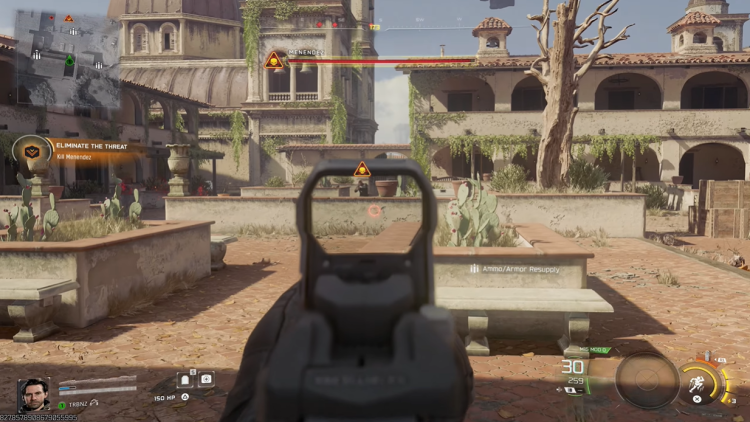
What emerges is a campaign that is neither a triumph nor a failure. It is an experiment that hits in some places and falters in others, underpinned by excellent gunplay and occasional sparks of visual creativity. The decision to prioritise co-op over solo play is bold, though it inevitably narrows the experience. A player approaching Black Ops 7 expecting a tightly structured, self-contained narrative will not find it here. A player willing to explore the campaign as a shared, multiplayer-first journey will uncover more of its potential, even if the overall shape remains uneven.
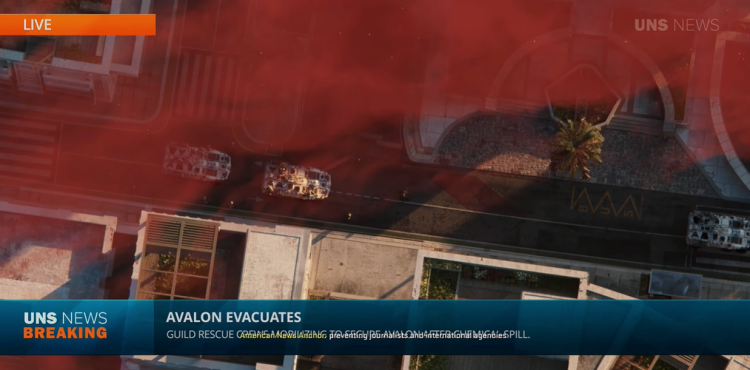
Black Ops 7 stands in the shadow of Black Ops 6, a campaign praised for its structure, confidence, and methodical pacing. Following that success within a single year would have been difficult under any circumstances. Black Ops 7, rather than repeating its predecessor’s strengths, veers in a different direction—with unpredictability as both its asset and its limitation. The campaign reaches for novelty through mobility, co-op design, and surreal landscapes, yet those same ambitions create the uneven terrain it never fully smooths out.

Its place in the series will likely be defined by this tension. It does not extend the lineage of grounded espionage that characterised the last entry. Nor does it fully embrace the controlled chaos of earlier futuristic installments. Instead, it occupies a transitional space: part co-op playground, part experimental shooter, and part narrative continuation of a storyline now more than a decade old. From that mixture comes a campaign that is engaging in bursts and flat in others, moving quickly but never decisively.
Call of Duty: Black Ops 7 Review shows a campaign that aims high but rarely lands with full authority. Strong gunplay and entertaining movement carry weaker missions, while its more ambitious moments provide enough material to sustain interest. Yet the uneven enemy density, repetitive endgame structure, and lack of solo-friendly design decisions prevent it from reaching the height its premise suggests. It is a campaign defined by its swings rather than its precision, staking its identity on ideas that remain only partially realized.
Read also, Call of Duty: Black Ops 7’s debut of AMD FSR Redstone marks a quieter but consequential shift on the technical side of the series. The game becomes the first commercial title to ship with ML Ray Regeneration, a machine-learning technique designed to stabilise ray-traced reflections on RDNA 4 hardware.
5 Free Cases, Daily FREE & Welcome Bonuses up to 35%


EGAMERSW - get 11% Deposit Bonus + Bonus Wheel free spin
EXTRA 10% DEPOSIT BONUS + free 2 spins

Sign up now and get 2 FREE CASES + 5$ Bonus
3 Free Cases + 100% up to 100 Coins on First Deposit


Comments